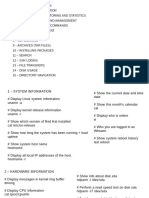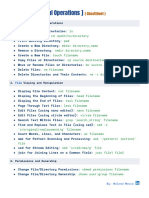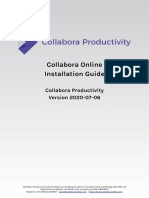0% found this document useful (0 votes)
53 views8 pagesLinux Command
The document provides a comprehensive list of Linux commands organized into various categories including File and Directory Management, Process Management, Disk Management, Networking, User and Group Management, and more. Each command is accompanied by a brief description of its functionality, making it a useful reference for users seeking to understand or utilize Linux commands effectively. Additionally, it covers advanced topics such as system diagnostics, file permissions, and containerization with Docker.
Uploaded by
Khushi LodhiCopyright
© © All Rights Reserved
We take content rights seriously. If you suspect this is your content, claim it here.
Available Formats
Download as PDF, TXT or read online on Scribd
0% found this document useful (0 votes)
53 views8 pagesLinux Command
The document provides a comprehensive list of Linux commands organized into various categories including File and Directory Management, Process Management, Disk Management, Networking, User and Group Management, and more. Each command is accompanied by a brief description of its functionality, making it a useful reference for users seeking to understand or utilize Linux commands effectively. Additionally, it covers advanced topics such as system diagnostics, file permissions, and containerization with Docker.
Uploaded by
Khushi LodhiCopyright
© © All Rights Reserved
We take content rights seriously. If you suspect this is your content, claim it here.
Available Formats
Download as PDF, TXT or read online on Scribd
/ 8



























































































